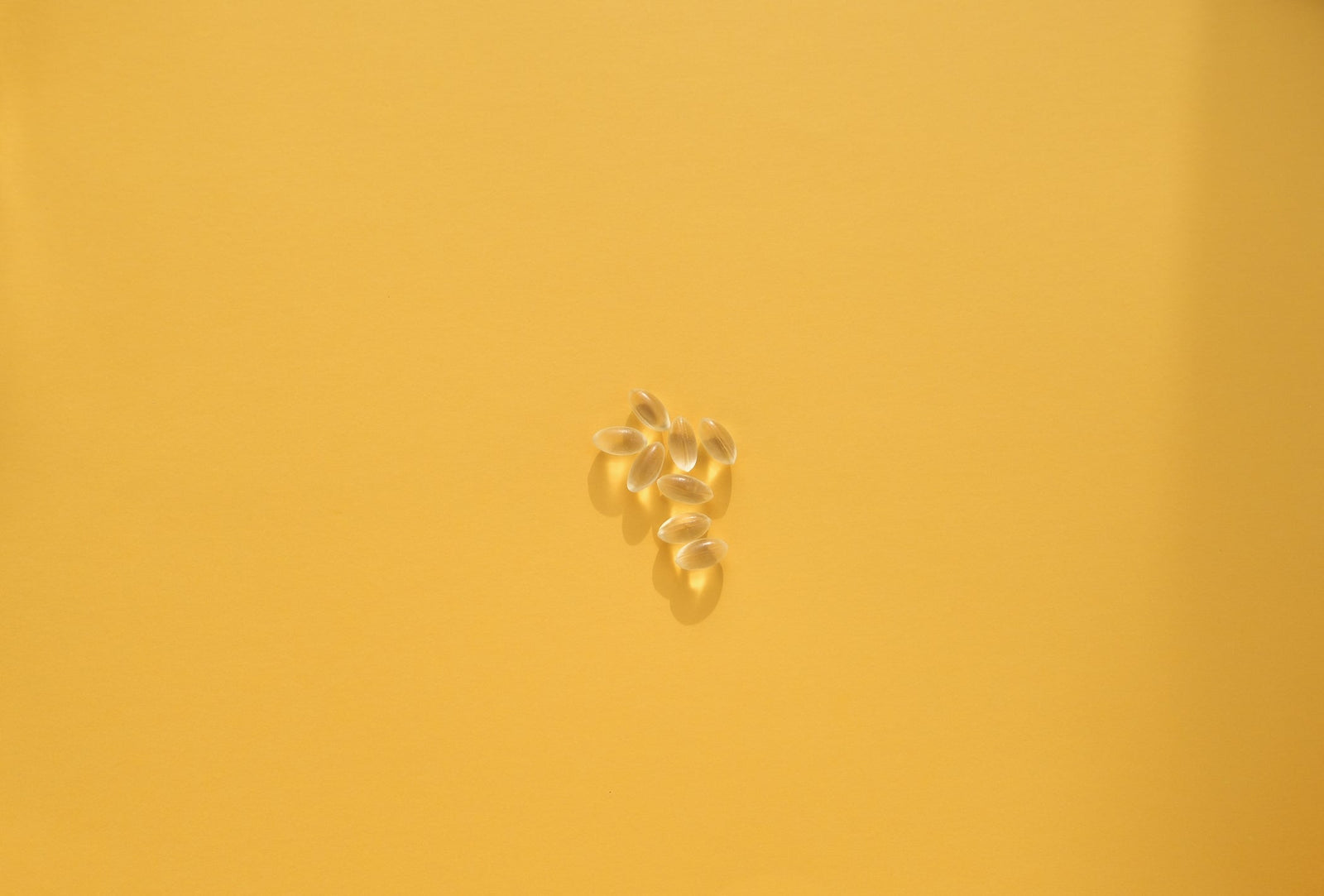Your Cart is Empty

February 26, 2024 7 min read
Take our quiz and find which supplements your body is craving.

Even if you’re a fan of snowy days, longer nights, and lower temperatures, you may find yourself feeling blue during winter. What can be even more puzzling is this feeling continuing as seasons change, which may lead you to think that the lack of sunshine isn’t the only issue. If your negative mood can correspond to seasonal change, you may be experiencing seasonal depression to one extent or the other.
While we can’t speak in terms of a concrete diagnosis, as that’s something you should discuss with a healthcare professional (and we will always advocate for an expert opinion!), we can shed light on the topic of seasonal depression and dive a bit deeper into this often-neglected subject.
Based on studies that have found a link between vitamin D deficiency and seasonal depression, we will take a closer look at the importance of optimal vitamin D intake and effective ways to deal with season-related low mood levels. Let’s talk about it!
Many of us can feel nostalgic, melancholic, or simply unmotivated during fall and winter. As cooler temperatures set in and the days grow shorter, we tend to spend more time indoors and put our favorite activities on hold.
However, the seasonal shift stretches beyond the winter blues for some people. This is defined as seasonal affective disorder (SAD). Winter depression, or winter-pattern SAD, is quite common, and it can seriously affect your thought process and, as a result, the way you feel and act.[1]

It is also important to differentiate between winter depression (SAD) and holiday blues or doldrums. While holiday blues are triggered by stress and expectations surrounding certain events that time of year, SAD doesn’t revolve around specific dates.
However, SAD isn’t limited to winter only. While winter-pattern SAD fades with rising temperatures and longer days, that isn’t the case with spring and summer-pattern SAD. Fairly uncommon, yet just as significant, summer-pattern SAD typically manifests the same way as winter depression.[1]
The symptoms of SAD can be felt for 4-5 months a year, and they can be unique to each individual. That being said, let’s take a look at some of the recurrent SAD symptoms[1]:
In addition to these symptoms, winter-pattern SAD may also manifest through binge eating, hibernating behavior (social withdrawal), as well as hypersomnia (oversleeping). Summer-pattern SAD, on the other hand, involves increased anxiety, poor appetite, insomnia, aggressive behavior, and agitation.[1]
Now that we’ve settled the what, we can move on to the why.
Developing SAD usually occurs in early adulthood, and the condition is much more common in individuals who live in areas with shorter daylight hours. It is, therefore, easy to conclude that winter depression is much more frequent and researched, whereas the summer-pattern SAD mainly remains a mystery. It is also important to mention that women are more prone to developing SAD, as well as individuals already dealing with depression, bipolar disorder, anxiety disorder, or panic disorder.[1]
But what exactly causes seasonal affective disorder?[1]

Light therapy remains one of the most effective SAD treatments, as it has been shown to promote natural vitamin D production. Vitamin D is naturally produced in the skin, but only when exposed to natural sunlight or via phototherapy. Studies show that as a result of vitamin D increase, depressive symptoms significantly increase, leading to a substantial improvement in the overall state of the patients.[2]
Moreover, an increase in vitamin D has been linked to an improvement in numerous other mental health disorders. To paint the picture a bit better, a study including 80 older adults concluded that individuals suffering from Alzheimer's and dementia have abnormally low levels of vitamin D. When looking at the data, we can easily detect the common denominator: the lower the vitamin D levels, the higher the chance of developing a mood disorder, or cognitive issues and conditions.[2]
But why is vitamin D such an important factor in cognitive and emotional well-being? Vitamin D is literally brain food, and it is a major factor in brain development. Vitamin D receptors are also found in the hypothalamus, an area of the brain that produces hormones that manage mood, heart rate, hunger, and body temperature.[2] Optimal levels of vitamin D aid in the early development of the brain but also protect the brain as we age and promote cognitive functions in the elderly.[3]
Vitamin D also plays a role in serotonin activity, increasing the risk of a deficiency during winter. Even during the summer, certain people may not be able to get enough direct sunlight due to their lifestyles and careers. In case the dietary sources of this vitamin are also absent, people who don’t spend enough time in the sun run a high risk of developing a deficiency and, consequently, seasonal depression.[1]
How much vitamin D is enough?Find out here.
In addition to SAD, symptoms of vitamin D insufficiency include [4]:
Seasonal depression doesn’t have to become a way of life. There’s no need to fret about yet another season change, as there are extremely effective ways of creating a psycho-emotional balance and facing these challenges head-on.
In addition to talking to a mental health professional, which is the most effective and reliable method of assessing SAD, here’s what you can do to manage and possibly prevent season-related depressive moods.
There is a scientific explanation for the way light makes us feel. Phototherapy involves a light box that exposes you to bright light, allowing you to obtain enough light exposure during the day. As we’ve explained, light affects important brain chemicals that influence our mood, and it is vital to have light exposure, preferably in the morning, to start the day.[5]

While this is impossible during winter for many people, as soon as there are more sunny days, aim to spend about 10-30 minutes in direct midday sunlight. Of course, the duration of your moment in the sun will depend on how much time you have, how sensitive your skin is, and your skin color (people with darker skin may need to invest a bit more time for optimal results). Sun exposure will kick start the natural vitamin D production.[6]
Speaking of vitamin D, a quality vitamin D supplement may reduce the chances of SAD development and alleviate the existing symptoms. Since the “sunshine vitamin” plays a significant role in brain development, cognitive functions, mood management, and many other vital processes, it is necessary to maintain optimal levels. Adding a supplement to your daily regime may be the easiest way to avoid suboptimal levels or deficiency.
Needless to say, a vitamin D supplement should only be an addition to a balanced routine, including regular physical activity (proven to elevate mood levels) and a nutrient-dense diet (including vitamin D-packed foods such as fatty fish, red meat, liver, egg yolk, and fortified foods such as cereals and plant milk).
Mental health issues tend to play a very cruel trick on people, making them feel like they’re all alone in their problems. In fact, millions of people around the world experience sadness, lack of motivation, and pressure when seasons change - especially during winter months.
While it may seem unattainable, change is possible and quite simple. Combining regular physical activity, a balanced diet, conversation with an expert, and quality supplementation is a foolproof strategy - and not just in the case of SAD. Don’t forget to get your dose of the sunshine vitamin and soak up all its benefits.

April 08, 2025 7 min read
Discover the powerful trio for graceful aging—Vitamin D3+K2 and Omega-3 fatty acids. This dynamic combination supports bone strength, heart health, immune function, and reduces inflammation, helping you maintain vitality and well-being as you age.

March 20, 2025 8 min read
Discover the benefits of creatine for women with Amandean’s Creatine HCI. Improve strength, energy, recovery, and cognitive function with this high-absorption formula. Its advanced HCl form ensures easy digestion and no bloating, providing all the benefits without the drawbacks. Elevate your fitness journey and overall wellness with a supplement designed for women’s unique needs.

March 03, 2025 7 min read
Discover how Bryan Johnson, a tech entrepreneur turned biohacker, uses cutting-edge science and personalized genetic testing to revolutionize health and longevity. Learn how biohacking, from diet to mental health practices, can help you live longer and healthier, with practical strategies to optimize your well-being. Find out more about genetic testing, and ways to implement results into your wellness routine.